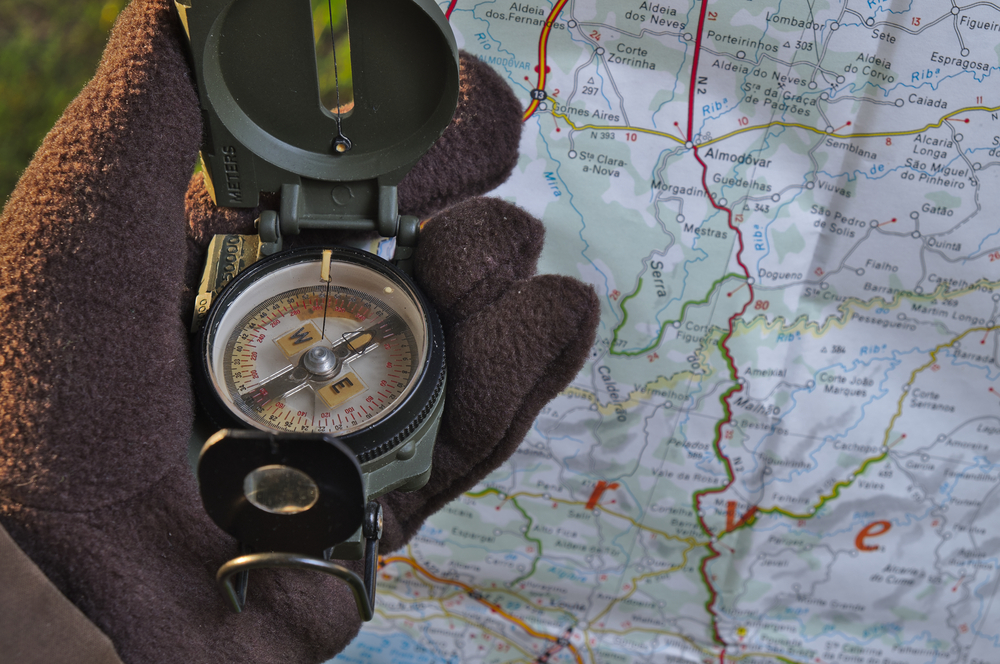Survivors in the throes of survival ordeals sometimes report the presence of a second, third or fourth person who appears and gives encouragement and direction in times of dire need. Survivors often credit this presence with their survival.
Is it a psychological or physiological coping mechanism? Is it a spiritual experience such as a spirit guide or a guardian angel? We would love to hear your opinion in the comments section.
Warriors of plains tribes reported entering a dream state during the sun dance. The particulars of the sun dance vary from tribe to tribe, but for some it is a grueling ritual where following a fast from food and water for days, bits of flesh are torn from the body and the participant dances to a drum in full sun, exposed to the weather, suspended by rawhide thongs pierced through the skin of the chest until the participant enters a trance-like state and experiences a vision. (Wikipedia, Sun Dance, 2023) This begs the question if the third man syndrome or a similar state can it be encouraged or provoked?
Known Cases of Third Man Syndrome
Third man syndrome has been experienced by climbers, shipwreck survivors, polar explorers, scientists, a NASA astronaut, aviator Charles Lindbergh, the first person to solo circumnavigate the earth by sea, and a 9-11 survivor. The Third Man Factor, published in 2009 by John Geiger, documents scores of Third Man incidents. In 2010, Geiger was elected President of the Royal Canadian Geographical Society, and he was appointed CEO of the organization in 2013. (Wikipedia, John Geiger (author), 2013) Together, these individuals make a credible, and fairly large, group of witnesses. Notably, a number of the survivors who have experienced third man syndrome are atheists.
Earnest Shackleton, Tom Crean and Frank Worsley trekked across the mountains and glaciers of South Georgia Island in route to the whaling station at Stromness Bay. After two months of slow going through ice, the Endurance became stuck in the pack ice on February 22, 1915. Seven months later, the ship was crushed, forcing the men and dogs onto the pack ice where they survived another six months as the ice flow travel north. Upon trekking to the edge of the flow, they set sail in lifeboats for Elephant Island some 100 nautical miles away. There, the crew camped, and Shackleton and five others embarked on a difficult 800-mile journey by boat to King Haakon Bay of South Georgia Island before the arduous 36-hour trek to the whaling across frozen mountainous terrain station pushed Shackleton, Crean, and Worsley to the limits of their endurance. (Wikipedia, Imperial Trans-Antarctic Expedition, 2024)
Shackleton and Worsley wrote about the trek and both men reported the impression that there were four men in their party during the trek instead of three. It is noteworthy that more than one member of the party appears to have had experienced the additional presence. After Shackleton and Worsley wrote about their experience, many more people spoke of it. (Wikipedia, Third man factor, 2024)
For Ron DiFrancesco who experienced third man syndrome on 9-11, it took the form of a man who spoke to him. He was on the 84th floor of the South Tower of the World Trade Center. Following the impact of the second aircraft, he repeatedly searched for an exit but couldn’t find one. On the verge of giving up, he sensed a presence he described as an angel, who called to him in an unfamiliar voice. (Darby, 2023) DiFrancesco claimed that as he lay prone to avoid smoke and fire, the entity took him by the hand and led him safely out of the building. (NPR, Guardian Angels or the “Third Man Factor?”, 2009)
“‘Someone told me to get up.’ Someone, he said, ‘called me.’ The voice, which was male, but did not belong to one of the people in the stairwell was insistent: ‘Get up!’ It addressed DiFrancesco by his first name, and gave him encouragement: ‘It was, ‘Hey! You can do this.’ But it was more than a voice; there was also a vivid sense of a physical presence,”
“He had the sensation that ‘somebody lifted me up.’ He felt that he was being guided: ‘I was led to the stairs. I don’t think something grabbed my hand, but I was definitely led.’”
John Geiger “The Third Man Factor: Surviving the Impossible.”
James Sevigny, PhD experienced it in a remote area of the Canadian Rockies. An avalanche carried him 2,000 feet down a mountain, breaking his back in two places, injuring his knees, and causing internal bleeding. Resigned to his fate, Sevigny curled up in the snow to die. Then he felt someone behind him who spoke to him. “No, you can’t give up. You have to live.” He said, “It was right over my right shoulder, it was like if I would sneak up to you and put my nose a quarter of an inch from your neck. It was that kind of physical sensation.”
Sevigny is a scientist who distains organized religion and claimed he couldn’t speak of his experience without crying for years afterward. (Blake, 2009)
In 1933, Frank Smythe nearly became the first man to reach the summit of Mount Everest. The rest of his party aborted the difficult attempt due to difficult weather conditions and the lack of oxygen in the thin air. Determined to reach his goal, Smythe continued and made it within 1,000’ of the summit. In his diary, he recorded:
“All the time that I was climbing alone, I had a strong feeling that I was accompanied by a second person. The feeling was so strong that it completely eliminated all loneliness I might otherwise have felt,”
NPR, Guardian Angels or the “Third Man Factor?”, 2009
Smythe was so convinced that his guide was a real person that he attempted to share some mint cake with him only to realize that no one was there after he turned around. (Dunhill, 2023)
In 1985, mountain climber Joe Simpson was climbing the west face of Siula Grande in the Peruvian Andes when he fell off an ice cliff, breaking his right leg and crushing his tibia into his knee joint. As his climbing partner, Simon Yates, lowered him down the mountain, controlling his rate of descent with a delay plate, he lost one of the Prusik loops he was using to descend the rope due to loss of dexterity caused by frostbite. After approximately an hour and a half, unable to communicate, without any fixed anchors, and with his own stance collapsing, Yates cut the rope, not knowing how far Simpson was from the bottom. Simpson fell down the cliff and into a deep crevasse.
When Yates descended the mountain, he could see that Simpson had likely fallen into the crevasse. Calling out to Simpson and hearing no reply, Yates concluded that Simpson had been killed in the fall and returned to base camp.
In his 1988 book Touching the Void, Simpson wrote that “a voice” offered encouragement and direction as he climbed out of the crevasse, hopped and crawled 5 miles back to base camp over three days with little water and no food, navigating a glacier littered with crevasses. Simpson reached base camp hours before Yates and a third party member who had waited at base camp were to depart. The fact that Simpson survived is regarded as extraordinary. (Wikipedia, Touching Void (book), 2024)
The bicameral mentality hypothesis was introduced by Julian Jaynes in 1976 in his book The Origin of Consciousness in the Breakdown of the Bicameral Mind. He postulated that the cognitive functions of the minds of our ancestors were divided between two parts: one part of the brain which “speaks”, and another part which “listens and obeys” and that the eventual dissolution of this division resulted in human consciousness. Whether one agrees with Jaynes or not, the idea that the third man syndrome could be rooted in the bicameral nature of the human mind may be worthy of consideration. (Wikipedia, Bicameral Mentality, 2024)
“If we understand that the Third Man Factor is a part of us, the way adrenaline is … then we can start to access it more easily,” Geiger writes. “It’s not a hallucination in the sense that hallucinations are disordering. This is a very helpful and orderly guide.” (NPR, Guardian Angels or The Third Man Factor?, 2009)
Is the third man factor an evolutionary adaptation, “the unraveling of the mind” (as Peter Hillary ascribes), “the psyche rising to the occasion”, a coping mechanism, an example of the bicameral mentality hypothesis in action, imaginary friends, the intervention of spirits, or guardian angels in action? (McGregor, 2012) No one seems to know the Third Man Factor is, even though it is undeniable that it has saved lives. What do you think it is?
References
Blake, J. (2009, November 8). Near death, aided by ghostly companion. Retrieved from CNN: https://www.cnn.com/2009/LIVING/wayoflife/11/08/third.man/
Darby, M. (2023, 26 May). Third Man Syndrome: Spiritual phenomenon or survival mechanism? Retrieved from deseret.com: https://www.deseret.com/23737552/third-man-syndrome/
Dunhill, J. (2023, February 13). Third Man Syndrome: In Life or Death Scenarios, Survivors Report a Helpful Person Appearning. Retrieved from Iflscience.com: https://www.iflscience.com/third-man-syndrome-in-life-or-death-scenarios-survivors-report-a-helpful-person-appearing-67508
McGregor, A. (2012, September 12). An Adventurer’s Guardian Angel: The Third Man. Retrieved from australiangeographic.com.au: https://www.australiangeographic.com.au/australian-geographic-adventure/adventure/2012/09/an-adventurers-guardian-angel-the-third-man/
NPR. (2009, September 13). Guardian Angels or the “Third Man Factor?”. Retrieved from npr.org: https://www.npr.org/2009/09/13/112746464/guardian-angels-or-the-third-man-factor
NPR. (2009, September 13). Guardian Angels or The Third Man Factor? Retrieved from npr.org: https://www.npr.org/2009/09/13/112746464/guardian-angels-or-the-third-man-factor
Wikipedia. (2013,) October 16). John Geiger (author). Retrieved from wikipedia.org: https://en.wikipedia.org/wiki/John_Geiger_(author)
Wikipedia. (2023, December 19). Sun Dance. Retrieved from wikipedia.org: https://en.wikipedia.org/wiki/Sun_Dance
Wikipedia. (2024, April 6). Bicameral Mentality. Retrieved from wikipedia.org: https://en.wikipedia.org/wiki/Bicameral_mentality
Wikipedia. (2024, May 10). Imperial Trans-Antarctic Expedition. Retrieved from wikipedia.org: https://en.wikipedia.org/wiki/Imperial_Trans-Antarctic_Expedition
Wikipedia. (2024, May 29). Third man factor. Retrieved from wikipedia.org: https://en.wikipedia.org/wiki/Third_man_factor
Wikipedia. (2024, May 18). Touching Void (book). Retrieved from wikipedia.org: https://en.wikipedia.org/wiki/Touching_the_Void_(book)










radar | June 28, 2024
|
I want to respond to the 3rd Person phenomena, using first an analogy. My analogy is going to be the name “Cache-Valley-Prepper (CVP)”. I grew up in southern California, then moved to Wisconsin, then moved to states bordering every American boundary, N, S, E, W; and plenty of middle states. But during all those travels, I was totally unaware that there actually was a location referred to as “Cache-Valley” in a state I never lived in.
So one day I was reading CVP’s articles, and had a thought that his “catch-name” revealed his bug-out strategy: (1) Don’t bug out to a place, but out to a valley! (2) Find valleys that have water supply, foraging supply and plenty of routes for SERE (survival, escape, resistance, and evasion). Heck! When I was a kid we used to play a game called “Fort”. We built forts; we had observation places…you get the idea (but the idea was not a house in a neighborhood). I thought the idea of choosing a valley (within one day’s walking distance anywhere in the valley) was a perfect plan, because even in many terrains, one must never eat in or just outside of one’s tent (bears, big cats); and if you poop uphill from your camp—that is not a good plan in rain or snow melt; and if you dig a well or a run-off pond for water, it had better be uphill from the poop-pee place. Squirrels don’t attempt to store all their nuts and seeds in one place, they pick many places (but in their neighborhood). Midwestern rabbits live under brush (not in holes); and when they birth their babies, they dig out a small hollow to place the baby-nest in and then sit on top of it (when enough cover is present so that they can scan their perimeter without being seen. The babies then drink mom’s milk. All I am saying is that normal animal life does not try (except in winter hibernation) to “live in one home”.
In a dire emergency, when one has exhausted every option perceived available to oneself—it is easy to decide to quit; but shortly thereafter many people can have what some may describe as a “visitation experience”. Its source can be from anywhere. It can come from deep inside one’s mind-psyche, and become a personification of self-talking-to self. Every creature struggles with being helpless at birth and every one surviving learns there is help beyond oneself, even when that help may be frustrating (like an emergency is). There is plenty of written ancient histories and from all over the world of “god-like helpers” by making a visitation to someone in dire urgency.
As a retired Chaplain (combat, hospital, social services, churches) I promise —LIFE DID NOT BEGIN WITH ME; nor will it end with me! It began from my parents, and expanded from there, even when slowly to me. When I am on my deathbed, I will try (in a prayer) to grab on to my God’s heel (so to speak) to get beneficial blessings on to my surviving spouse and offspring. There is plenty of historical reference to perceptual angels assisting people ready to give up and give in; and plenty of stories of people who survived. There are written ancient stories in every nation of the appearance of a 3rd person-like entities who appeared as an animal (Numbers 22:22f) talking back to its master in human talk, who was beating it with a stick); as a voice (1 Samuel, Chapter 3), as a vision (Genesis 15:1f), as a fish (Jonah 1:17), as a devil (Genesis 3:1), and beyond unexpected real-life people who just show up with help and/or rescue (Acts 8:39-40).
Cache Valley Prepper | June 30, 2024
|
Radar,
Thank you for your comments and for your service. I appreciate your insight.
Yes, Cache Valley is was called the Bear River Valley but became known as Cache Valley after an excavation for a fur cache caved in and killed a man. It runs from Utah up into Idaho. It is somewhat of an anomaly in the West as water flows into it from three directions. That’s a big deal out here where one must normally travel from water to water.
The Ranger Handbook also discusses the concept of a “Hole Up Area”
14-7. HOLE UP AREA. This is an isolated area selected during movement. Use it when your physical condition requires that you stop for food, water, equipment maintenance, and rest. Generally, avoid occupying such a position for more than 72 hrs. When selecting a hole up area, consider–
• Abundance of food and water
• Isolated
• Low population density
• Security at all times
• Movement in or around hole up area is still kept to a minimum
• Decentralize–separate rest, food procurement, food preparation and so on.
I relocated here from the Phoenix-Metro area because I didn’t want to be there when things go sideways. When I left, Phoenix didn’t even have an evacuation plan. There isn’t anyplace within a tank of gas with enough infrastructure to house even a fraction of the population.
Cache
radar | July 5, 2024
|
Cache, Thanks for sharing your history and explaining “Cache-Valley”, its location.
My first born son died on Valentine’s Day 2021 from a 26-year disability led illness. He was run over/dragged under a Toyota Pickup, down a driveway, across a street, up a curb until it stopped on a tree. He crawled out on his own power. We took him to the ER for X-rays (no problem) until 6 mos later–hard to sit and stand long (nerve damage not seen in circa 1990 era Xrays). Just under 2 months before he died he told his mom: “Mom, I saw a vision. I really did. I was not dreaming. There was a man standing over me who looked just like me and dressed like me. He didn’t say a word, just looked at me.” My son had bouts where he collapsed to the floor and lay there for 2-3 days. After the first time he put his spare food, water, pee-bottle, towels, blanket on the floor, in case it happened again (that was his disability “prepping”). My wife told me about the vision-experience a week later. I thought about it for a day or three, and told my wife, tell “Him” (I helped raise him) that the man was his Guardian Angel, who didn’t say a word because he knew all about him, all his life. He came to let you know he is coming back again “soon enough” to accompany you on a trip “out of this world”. My son had many bouts of severe bitterness (‘poison’ for many years, which is no way to go to heaven (if that was a desire). About two weeks later he began the downturn (11 days hospital)–5-days home in Hospice, then died. He had a visiting-presence in the vision; and had a human interpreter of what the vision meant. The thing that most surprised me, as family gathered the evening before he died is that everytime I walked by him, he moved his head as if to identify me (his father). He didn’t know who I was, because his eyes were failing. All he saw was a tall shadow walk by. I told him, “chris, I’m Dad, getting your….”. I think he was expecting his 3rd-person-presence, who came soon enough, by 9am the next morning. I was at peace with it all. His life was so difficult and physically painful every day. He wanted to “go” much earlier, but didn’t know how. He told his Mom he would never “DO IT” to himself, because of her Catholic upbringing (as in the 1950s)…I don’t want to finish the last thought because I am not trying to preach here, but still commenting on different presences who may be present at or near one’s departure from this life.
Jane | July 5, 2024
|
Do we have to give it a name, and study it to no end? Can’t it just be an innate reminder that I’m not alone, and there is hope. I. chose to.believe it’s the Holy Spirit we are all born…..your Soul.
Dorothy Cox | July 7, 2024
|
/S
Since you asked: I have seen angels three times in my life:( I am 85) and heard them singing over a lake. Two were hitch-hikers who never spoke a word, but drew out of me praises to God and all he does, lookin with so much understanding directly into my sou. the third was a beautiful young man in a gym who lifted the weights off my exercise machine and knew the deep hurt and rejection I was going through More than twice, I was protected in a possible accident , once in a VW bug with my two children,,squeezed between two huge trucks going up a hill., and crying for Jesus to save us.
Every day I experience God’s perfect timing, and know that I am in his perfect care.